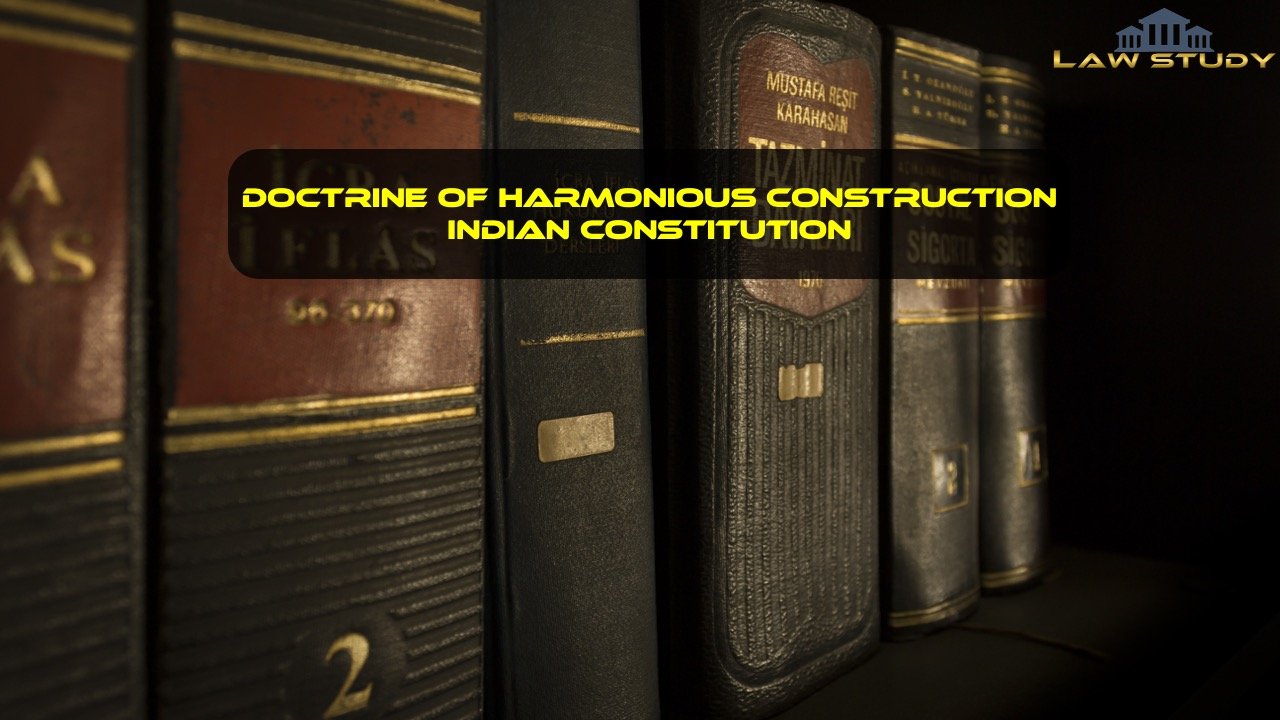Introduction: The legislature creates the various statutes, or laws, that we follow, but the judiciary is sometimes responsible for interpreting the laws. The need for statute analysis may occur as a result of a lack of certainty in the Legislature or simply because it’d be best if the issue were determined on a case-to-case basis.
The judiciary can easily adhere to the numerous doctrines available under the law when interpreting and constructing various statutes. The harmonious construction doctrine is one such doctrine. It is enshrined in the Constitution Of India and has been referenced in a wide range of legal cases.
ideology of harmonious construction
The ideology/doctrine of harmonious construction holds that a statute should indeed be read in its entirety and that statutory provision should be interpreted with the rest of the statute in consciousness. It can not be excluded before being scrutinized. This makes sure that the statute is consistent, and that any inconsistencies between the various provisions are avoided to the extent possible.
According to Salmond
The construction is a method by which courts determine the significance of statutes through the use of authoritative terms. Schedule 7 of the Indian Constitution contains three lists on which the Central and State governments can legislate:
- The Union List (List I), (UL)
- The State List (List II), (SL) and
- The Concurrent List (List III), (CL).
Harmonious construction is a doctrine for achieving a harmonious relationship between these Lists. Furthermore, the judiciary has the power to interpret a law consistently to clarify any points of contention.
Beginning of the Harmonious Construction Doctrine
The ideology of harmonious construction emerged as a consequence of court interpretations. On occasion, the judicial system decided typical cases involving a clash between 2 separate clauses.
This doctrine first appeared in India as the rule of the mediation process in the case of the C. P. & Berar Act, in which the concerned court dispersed the lack of consistency between Entries 24 & 25 of the State List (List II in the Indian Constitution) and analyzed them harmoniously.
After the landmark decision of Prasad v. U. Shankarinion of India, in which the dispute was between fundamental rights & directive principles of state policy, the first amendment to the Constitution was passed. The court ruled that because the Fundamental Rights are anti-state rights, they could be taken away or revised. Fundamental Rights and Directive Principles are both necessary for the functioning of the state; they can be considered two faces of the same coin.
Objectives of Harmonious Construction
Harmonious construction focuses on preventing any dispute between the two legislating provisions of a statute by construing them in such a way that they complement each other. The concept of this rule is that the Legislation never intends to include two contradictory provisions in a statute because it would be self-contradictory.
The true statutory interpretation, which we seek to uncover through the interpretation process, cannot be to deliver for something else in one provision and deny it in the subsequent one. As an outcome, even if an inconsistency is discovered, it should be regarded as inadvertent and, as such, must be remedied through harmonious construction.
Two Maxims serve as the Foundation of the Doctrine of Harmonious Construction
- GENERALIA SPECIALIBUS NON-DEROGANT (GSND), which means that general things do not go against special things, and
- GENERALIA SPECIALIBUS DEROGANT (GSD), which means that special things go against general things.
The doctrine is useful in cases where two provisions of the same Act, or provisions of distinct Legislative acts, conflict, as well as in the creation of statutory rules & orders. However, if a person has access to two remedies, one of which is broadly applicable and the other of which is specific, they will remain so unless the person chooses one of them.
Importance of Interpretation of Statutes
Every judge’s decision is entrusted with legal interpretation, which should be approached with care and consideration. The court can almost always interpret legislative action in its manner, and it is solely the court’s responsibility to know the legislature’s intent while implementing the doctrine. Different statutes require different interpretations, and the interpretations must be clear and concise.
However, there will be no interpretation if both provisions are unclear. They can only interpret whenever the statements are clear, and if there is any amount of uncertainty, the court will investigate the statute’s enacting provisions. The court can only use the literal interpretation and the prevalent interpretation in this case.
Every word in the law has a meaning, as well as the explanation, will expand beyond the scope and reach of the outcomes and purposes for which the law was enacted by the legislature. As a result, the court must recognize the significance of the ‘Ideology of Harmonious Construction’ and the interpretation of statutes in a broad sense, especially given its ever-expanding scope in today’s world.
C.I.T V Hindustan Bulk Carriers case
In the Landmark Judgement of CIT V Hindustan bulk carriers case
- The courts must eschew a head-on collision of apparently contradictory provisions, and they should comprehend the contradictory provisions so that they are harmonized.
- A provision in one section cannot be used to overcome a provision in another except if the court, despite its best efforts, has been unable to resolve its distinctions. When it becomes impossible to resolve the distinctions in conflicting provisions, the judges should construe them in such a manner that the impact of both provisions is granted as much as possible.
- Courts should also consider that limiting one provision to a useless statistic or asserting it is unconscious or dead is not a harmonious construction.
Harmonization doesn’t implicate that any statutory provision is repealed or rendered ineffective.
Conclusion
Legislation is made by lawmakers, and there is also the probability of misunderstanding. In such cases, the principle of statute interpretation applies, and the clauses are interpreted to give them the most adverse effect possible. This doctrine has aided judges in easily interpreting the two opposing laws and in ensuring justice to the general public. As a result, it is one of the most essential tools in the hands of judges when interpreting the law.

























